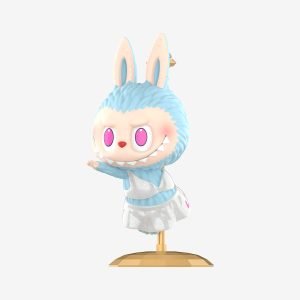Germany has long been a country where art, design, and fashion intersect to create bold cultural statements. Among the newest cultural icons https://labubuco.de/ to make its way into German cities is Labubu, the mischievous and charming character originally designed by Kasing Lung and popularized through Pop Mart collectibles. While Labubu originated in Asia, its influence has crossed borders and is now embraced across Germany, where it is not only viewed as a collectible figure but also as a fashion and cultural emblem. This adoption of Labubu reflects Germany’s ability to integrate international trends into its own vibrant artistic landscape.
Labubu as a Global Pop Culture Icon
Labubu has transcended the boundaries of being just a toy or collectible. Its whimsical appearance, with exaggerated expressions and quirky forms, embodies a global wave of pop culture art collectibles that merge nostalgia, fashion, and modern aesthetics. In Germany, this phenomenon has been magnified by the country’s strong affinity for avant-garde culture and its role as a hub for design innovation. German consumers recognize in Labubu a reflection of contemporary art that resonates with both youthful playfulness and serious artistic appreciation.
Why Germany Connects with Labubu
Germany’s cultural identity is built on a foundation of artistic experimentation and fashion-forward thinking. Cities like Berlin, Hamburg, and Munich thrive on alternative subcultures and bold artistic expressions. Labubu fits seamlessly into this environment, where individuality and nonconformity are celebrated. Collectors and fashion enthusiasts in Germany see Labubu not just as a figurine but as a symbol of creativity, much like street art or independent fashion labels. The character’s cheeky and unpredictable nature resonates with German youth culture, which values freedom of expression and artistic rebellion.
Labubu in German Fashion Culture
Fashion in Germany often blends minimalism, bold graphics, and experimental statements, and Labubu has become an accessory and motif within this environment. Streetwear brands, local designers, and even independent concept stores in Berlin have embraced Labubu as a recurring motif. Labubu-inspired fashion collaborations, ranging from hoodies, graphic tees, and accessories to limited-edition sneakers, are being integrated into the wardrobes of German youth. This cultural cross-pollination shows how fashion in Germany adapts international elements while preserving its unique underground aesthetic.
The Rise of Collectible Culture in Germany
Germany already has a rich history of Labubu Doll collectible culture, from vintage vinyl records to limited-edition designer toys. The arrival of Labubu fits naturally into this tradition, particularly as designer toys and art figures become mainstream. Collectors in Germany value authenticity, rarity, and artistic depth—qualities that Labubu embodies. Events, conventions, and pop-up exhibitions dedicated to collectible culture often feature Labubu as a centerpiece, attracting enthusiasts who see it as both an investment and an expression of cultural belonging.
Labubu and the German Art Scene
The German art world is known for embracing movements that blend high art with popular culture. Labubu, with its origins in character design and toy culture, has sparked discussions within contemporary art spaces in Germany. Galleries and pop-up exhibitions in Berlin have featured Labubu-inspired installations, connecting the character to themes of identity, humor, and consumerism. By positioning Labubu alongside other cultural icons, Germany acknowledges its role not only as a collectible but as a piece of living art.
Social Media and the Spread of Labubu in Germany
Social media has played a crucial role in amplifying Labubu’s presence in Germany. Platforms like Instagram and TikTok have allowed German influencers, fashion bloggers, and collectors to showcase their Labubu-inspired styles and collections. Hashtags dedicated to Labubu have created communities where enthusiasts exchange ideas, trade pieces, and showcase customized fashion looks. This digital visibility has fueled a sense of collective identity, making Labubu a cultural touchpoint for Germany’s younger generations.
Berlin: The Heart of Labubu’s German Popularity
If there is one city where Labubu thrives most prominently in Germany, it is Berlin. Known for its subcultural diversity, fashion-forward identity, and experimental art scene, Berlin provides the perfect stage for Labubu to flourish. Concept stores in districts like Kreuzberg and Mitte often display Labubu alongside avant-garde clothing lines, while underground art collectives integrate the character into their works. Berlin’s eclectic environment ensures that Labubu is not just a passing trend but a deep-rooted cultural symbol.
Fashion Events and Labubu’s Influence
Germany’s vibrant fashion events, such as Berlin Fashion Week and numerous independent showcases, have increasingly integrated Labubu-inspired designs. Designers experiment with Labubu motifs to create pieces that reflect playfulness mixed with high fashion aesthetics. From oversized coats adorned with Labubu prints to accessories designed around its whimsical face, the character becomes a fashion statement that bridges the playful and the avant-garde. These events highlight how German fashion embraces global influences and reshapes them into something uniquely its own.
Labubu and German Youth Identity
For German youth, fashion and culture are tools of self-expression. Labubu embodies this spirit by offering a symbol that is both lighthearted and deeply artistic. Many young people in Germany associate Labubu with individualism, rebellion, and creativity, mirroring the same energy found in Germany’s street art and underground music scenes. Owning a Labubu collectible or wearing Labubu-inspired fashion is not merely about following a trend but about signaling membership in a community that values artistic authenticity.
Economic and Market Impacts of Labubu in Germany
Labubu’s growing popularity in Germany has also created significant economic opportunities. Pop-up stores, online resellers, and collaborative fashion drops generate demand across the country. The secondary market for Labubu collectibles thrives in Germany, where rare editions are sold for premium prices. Beyond collectibles, Labubu’s integration into fashion lines has strengthened local brands by connecting them with international cultural movements, giving Germany an even stronger position in the global streetwear and collectible economy.
The Future of Labubu in German Fashion and Culture
As Labubu continues to gain prominence, its role in Germany’s cultural and fashion landscape will only deepen. We can expect to see greater collaborations with German fashion designers, the appearance of Labubu in art festivals, and continued popularity within youth subcultures. Labubu has become more than just a collectible figure—it is now a cultural bridge that unites Germany with global creative trends. This synergy ensures that Labubu will remain not just a fleeting trend but a lasting icon in German cultural identity.
Conclusion
Germany’s embrace of Labubu reflects a powerful intersection of art, fashion, and cultural identity. By adapting this global phenomenon into its unique creative environment, Germany demonstrates its ability to transform international trends into culturally significant movements. Labubu is no longer just an Asian collectible; in Germany, it has become a fashion statement, a cultural emblem, and a reflection of artistic individuality. As German fashion, youth culture, and art continue to evolve, Labubu’s mischievous presence will remain at the heart of this transformation.












Leave a Reply